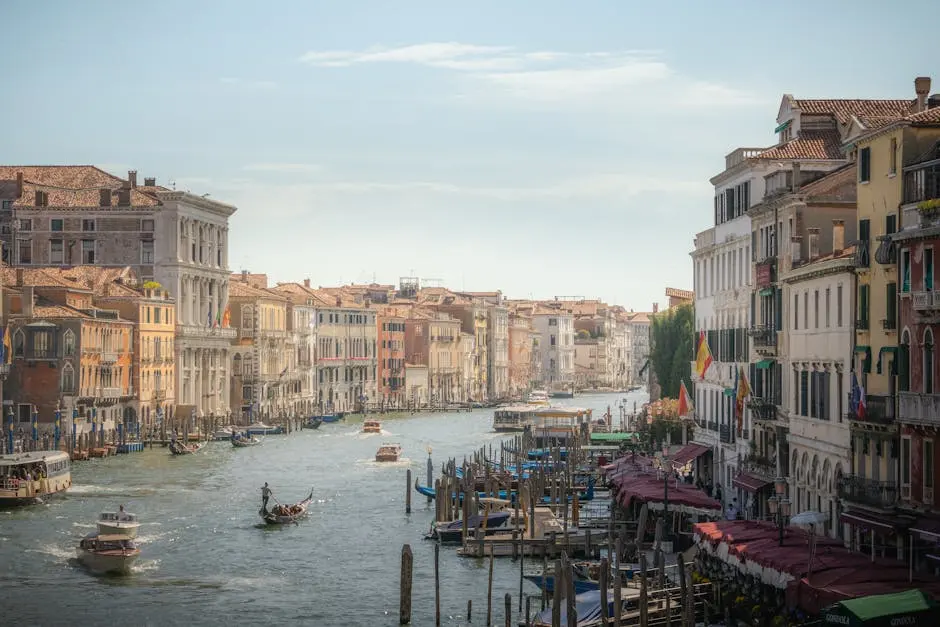Welcome to a journey through Italy, a country renowned for its vibrant culture and layered history. From ancient ruins to modern art, Italy offers a wealth of experiences that are both profound and enchanting. In this blog, we’ll explore the key elements that make Italy a unique blend of the past and present.
The Intriguing Legacy of Ancient Rome
Italy’s history is deeply rooted in the grandeur of Ancient Rome. From the iconic Colosseum to the intricate ruins spread throughout the country, these remnants offer a fascinating glimpse into a civilization that shaped much of the Western world. Exploring these sites can feel like stepping back in time, allowing us to connect with the past in a tangible way.
Walking through the streets of Rome, one cannot help but feel the whispers of history in the air. The Roman Forum, once the center of public life, is now a sprawling archaeological site where the bones of ancient buildings stand in silent testimony to the Empire’s glory. Meanwhile, the Pantheon, with its architectural marvel of a dome, continues to inspire architects around the globe. Such sites are essential in understanding the Roman Empire’s influence, which extended far beyond Italy’s borders, reaching as far as India and Scotland.
Moreover, the stories of emperors, gladiators, and philosophers who once roamed these lands are captured in grand theatres and museums. The Museo Nazionale Romano, for instance, hosts a grand collection of Roman art and artifacts, allowing visitors to delve deeper into the life and times of ancient Romans. These historical remnants act as a bridge, connecting the bustling vibrancy of modern-day Italy with its illustrious past.
The Renaissance: Rebirth of Art and Thought
Italy was the cradle of the Renaissance, a period that ignited a renewed interest in art, culture, and intellectual inquiry. Cities like Florence and Venice became hubs for artists like Leonardo da Vinci and Michelangelo. The masterpieces born during this era continue to inspire awe, embodying the spirit of creativity and innovation.
Florence, often heralded as the birthplace of the Renaissance, is a treasure trove of artistic marvels. The Uffizi Gallery houses works from luminaries such as Botticelli and Raphael, while the Accademia Gallery showcases Michelangelo’s ‘David,’ a symbol of human strength and beauty. The city’s skyline is dominated by the majestic dome of the Santa Maria del Fiore Cathedral, designed by Brunelleschi, symbolizing the era’s architectural prowess and innovative spirit.
Venice, with its labyrinth of canals, complements this renaissance legacy with its own flair. The city’s ornate palaces and churches stand as a testament to the era’s opulence and artistic achievement. It’s here that one can admire the works of Titian and Bellini, whose art narrates stories of religious fervor and worldly grandeur. Such masterpieces reflect the profound transformation and flourishing of ideas and art during the Renaissance period.
Italy’s Cultural Traditions and Festivals
From the vibrant Carnival of Venice to the solemn celebrations of Easter in Rome, Italy’s cultural traditions are rich and varied. These festivals not only highlight the country’s historical and religious significance but also showcase the joyful exuberance of Italian life. Participating in these events is a unique way to experience Italy’s local customs first-hand.
During the Carnival of Venice, the city’s streets and waterways transform into a pageant of color and sound. Revelers don ornate masks and costumes, parading through the historic alleys and piazzas in a celebration that dates back to the 12th century. This festival is an immersive experience of the cultural expressions that define key aspects of Italian identity. Meanwhile, Easter in Rome offers a more solemn reflection, with processions and rituals that mark this significant religious event, attracting visitors from around the globe to observe and participate.
The tradition of La Befana, celebrated on the Epiphany, is another cherished Italian custom. According to folklore, Befana, a benevolent witch, visits children on the eve of the Epiphany, bearing gifts. This tradition is celebrated with parades, festivities, and a lot of sweets, offering a charming insight into Italy’s folk traditions and their enduring popularity across generations.
The Flavors of Italy: A Culinary Journey
No exploration of Italy’s culture is complete without indulging in its world-renowned cuisine. From the bold flavors of Italian pasta to the richness of gelato, each region offers its own culinary specialties that are a testament to the country’s love for food. Italian cuisine is not just about nourishment but also an expression of culture and tradition.
Each region in Italy offers a distinct gastronomic experience that’s worth savoring. Florence is renowned for its hearty steaks, while the coastal cities such as Genoa provide an abundance of seafood dishes. The beauty of Italian cuisine lies in its simplicity and focus on local ingredients. A handful of tomatoes, basil, and parmesan can create a symphony of flavors that is both comforting and exciting. Such cuisine is a direct reflection of Italy’s fertile landscapes, ranging from the almond orchards of Sicily to the vineyards of Tuscany
Joining a cooking class in the picturesque countryside of Tuscany can provide a hands-on experience of this culinary heritage, where you can learn to make traditional dishes yourself. Beyond the kitchen, visiting local markets offers an opportunity to witness Italians’ close-knit relationship with food, as well as a chance to explore unique regional products that define Italy’s rich culinary landscape.
Modern Italy: Preserving Tradition Amidst Change
While deeply rooted in its historical framework, Italy continues to evolve in today’s world. The country embraces modernity while diligently preserving its rich traditions, creating a fascinating contrast that defines its national identity. Observing how Italy navigates between these worlds is an enriching experience, showcasing resilience and adaptability.
Today, Italy stands as an economic powerhouse within Europe, yet it never loses sight of its rich history and traditions. Cities such as Milan are at the forefront of fashion and design, representing the cutting edge of modern innovation. Rome, with its vivid juxtaposition of ancient ruins and bustling contemporary life, is a city that encapsulates Italy’s seamless blending of the old and new.
Italy’s cultural landscape is an ever-evolving canvas. The revival of traditional crafts, alongside the integration of modern design, preserves the essence of Italian artistry. This synergy is not only celebrated within Italy’s borders but also cherished by an international community that appreciates the timeless allure of Italian culture.
Embracing Italy’s Timeless Essence
Through its historical landmarks, cultural traditions, and flavorful cuisine, Italy presents a rich tapestry of history and culture that captivates all who visit. Its ability to blend the old with the new ensures that this country remains as timeless as it is dynamic. We hope this exploration has inspired a deeper appreciation for all things Italian.








